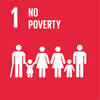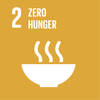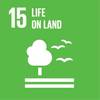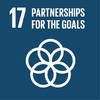IES and the SDGs
End poverty in all its forms everywhere
A key objective of IES is to support farmers overcome financial, technical and capital barriers to develop sustainable agriculture and natural resource management. This supports work towards poverty alleviation, in particular mobilizing resources from multiple sectors (SDG 1a) to implement initiatives that improve living standards for developing countries. Stronger agricultural ecosystems and diversified livelihoods can also enhance environmental and social resilience (SDG 1.5) to reduce vulnerability to extreme events.
End hunger, achieve food security and improved nutrition and promote sustainable agriculture
IES provides incentives to increase knowledge, access extension services, improved productive resources and inputs, access to rural credit and value-added markets (SDG 2.3, 2.4, 2a). This supports the implementation of sustainable agricultural practices that also improves and maintains ecosystem services. This can assist farmers to produce crops of higher nutritional value, increase the resilience of ecosystems (SDG 2.4) to increase food security through increased productivity (SDG 2.3), improved water availability, and increase soil fertility and structural stability.
Achieve gender equality and empower all women and girls
Women and men face different adoption barriers to implementing sustainable practices and may, therefore, require different incentives. IES packages provide a diversity of incentives to address diverse stakeholder needs (SDG 5A) as well as supporting coordination across sectors. This can enable greater access to resources and, through engagement with communities implementing activities, promote greater participation for women and girls. (SDG 5.5).
Ensure availability and sustainable management of water and sanitation for all
The IES approach enables a framework to support the integrated management of water resources (SDG 6.5) that use incentives to support improved irrigation and water management systems. This can build capacity to harvest water (SDG 6.2), improve access to water (SDG 6.1), distribution and efficient use of water resources (SDG 6.4) for multiple sectors and stakeholders.
IES packages are often built around upstream-downstream relationships to improve the quality and quantity of water supplies. Practices upstream that support the protection, restoration and sustainable use of terrestrial ecosystem services will also have positive impacts on the management and protection of water resources. For example, incentives to support improved agriculture may implement riparian buffers to protect water sources and encourage the use of organic fertilizers that also reduce inorganic water resources (SDG 6.5)
Ensure sustainable consumption and production patterns
The IES approach provides incentives to support smallholders transition to sustainable production practices and more effectively manage and use natural resources (SDG 12.2). Engagement with the private sector for investment in and along value chains within landscapes can also encourage the adoption of sustainable production and procurement practices (SDG 12.6, 12.7). IES dialogues and sharing of information can also increase awareness of sustainable practices and support policy development to move towards more sustainable patterns of consumption and production through improved scientific and technological capacity (SDG 12.8, 12 A, 12B)
Protect, restore and promote sustainable use of terrestrial ecosystems, sustainably manage forests, combat desertification, and halt and reverse land degradation and halt biodiversity loss
Packages of Incentives for Ecosystem Services allow farmers to overcome adoption barriers to protect, restore and sustainably use and manage agro-ecosystems, forests and water resources, and address land degradation and biodiversity loss (SDG 15). Single incentives from individual public programme or private sector finances may implement targeted activities. When integrated and coordinated as a package, however, these activities and the incentives provided to support farmers implement them, enable the sustainable use of terrestrial ecosystems and sustainable management of natural resources. This supports land restoration and reduces the loss of biodiversity.
Strengthen the means of implementation and revitalize the global partnership for sustainable development
IES packages enable a more coordinated and effective financial response. It also provides a strong framework and enabling environment in which to strengthen SDG implementation and support multi-sectoral partnerships at local, regional and global levels. This includes engagement with and investment from public, private sector, civil society, development partners and non-governmental organizations (SDG 17.17).
IES builds on existing public progrmames and stimulates co-financing from multiple sectors that use ecosystem services provided by agriculture, at lower social cost (SDG 17.3). Such a policy framework can support increased mobilization and efficient use of financial resources, and also encourage global partnership for global development (SDG 17.16).







